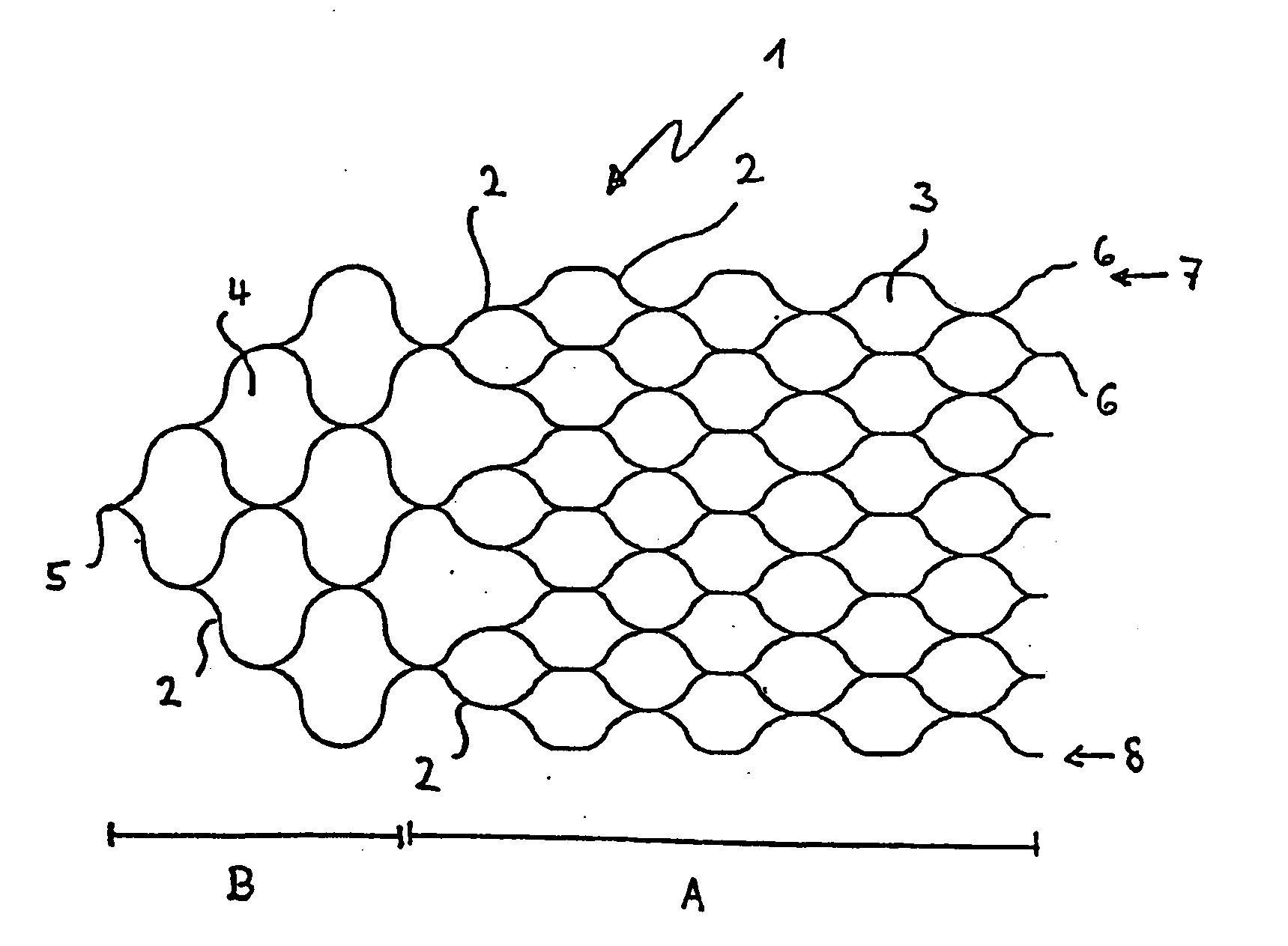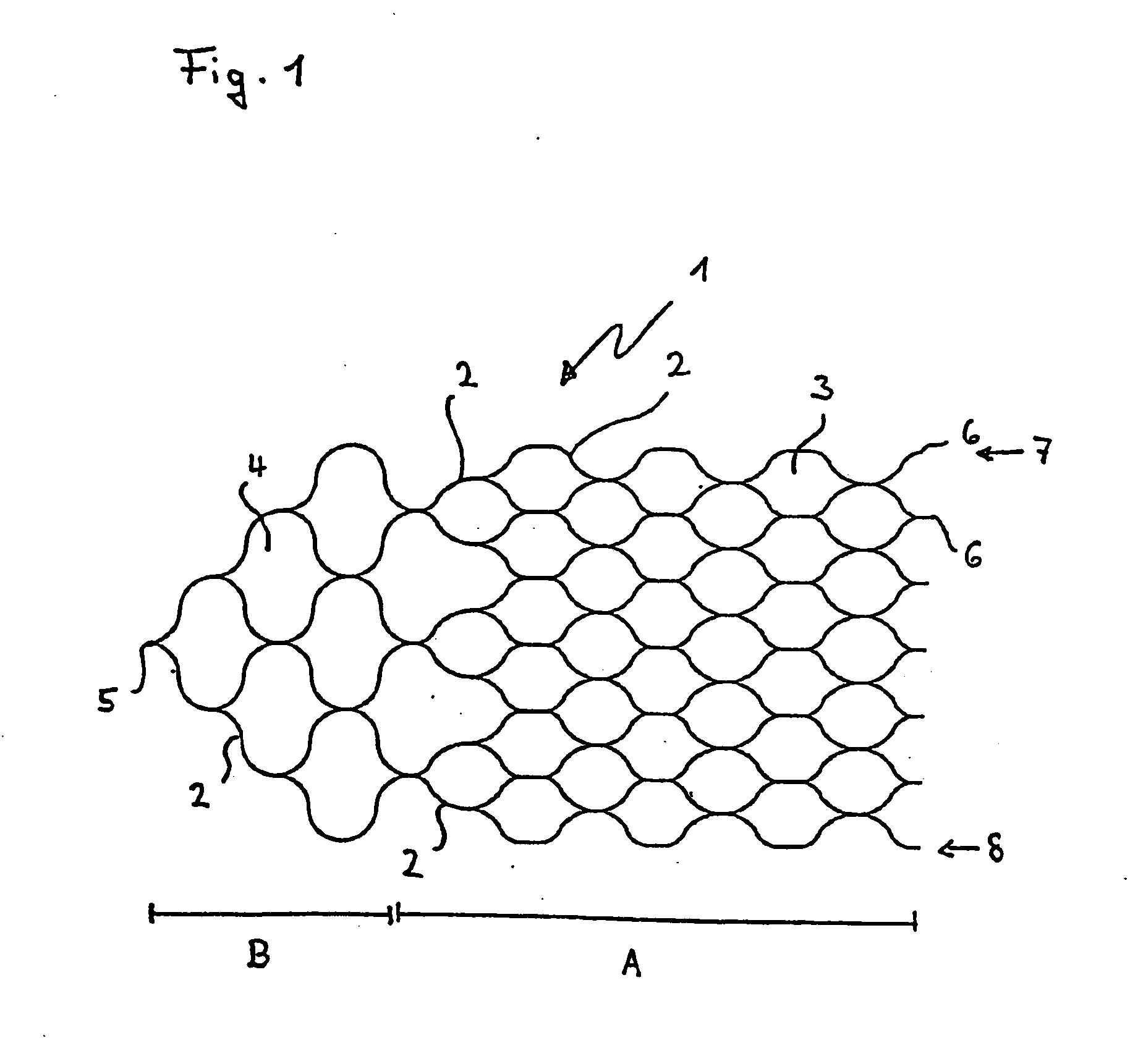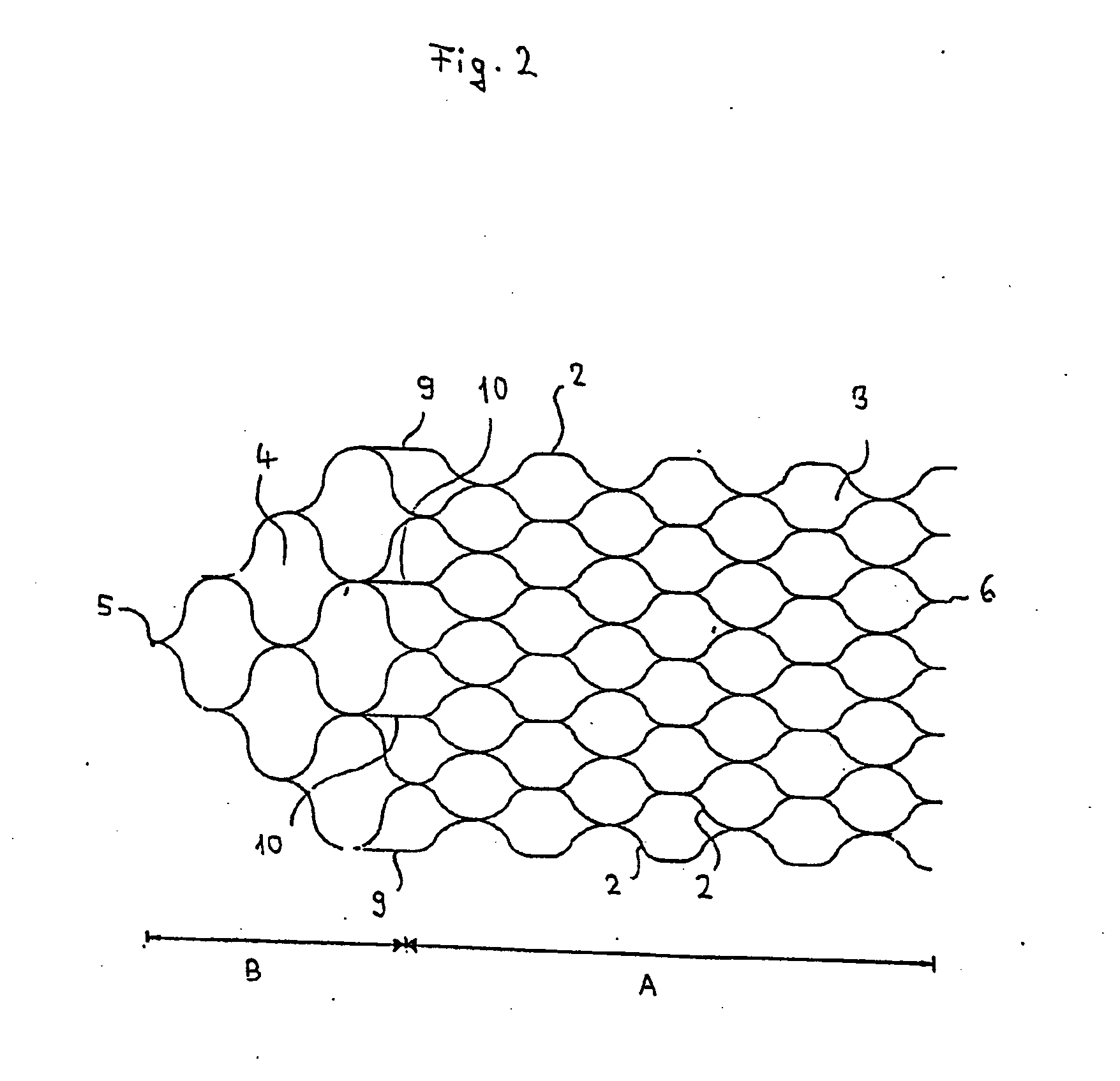Medical implant having a curlable matrix structure
a technology of curvature and matrix structure, applied in the field of medical implants, can solve the problems of stents that have to be expanded first, stents can easily be compressed, and risk of vessel injury, so as to facilitate handling and enhance the sliding
- Summary
- Abstract
- Description
- Claims
- Application Information
AI Technical Summary
Benefits of technology
Problems solved by technology
Method used
Image
Examples
Embodiment Construction
[0032] An implant, according to FIG. 1, consists of a mesh or honeycomb structure that, in one embodiment, comprises a multitude of filaments interconnected by a laser welding technique. The implant can be subdivided into a functional structure A and a tapering proximal structure B, the two structures being distinguishable, inter alia, by a different mesh size. To enable the functional structure A to perform its retaining function, its mesh cells 3 are held relatively narrow so that they lend themselves to the retention of occlusion spirals arranged in an aneurysm. In general, the mesh width is in the range of 0.5 to 4 mm and may vary within an implant.
[0033] In one aspect of the present invention, the implant is a flat or two-dimensional structure that is rolled up to form a longitudinally open object capable of establishing close contact with the wall of the vessel into which it is introduced.
[0034] In the tapering proximal structure B of the implant, there is provided a wider m...
PUM
 Login to View More
Login to View More Abstract
Description
Claims
Application Information
 Login to View More
Login to View More - R&D
- Intellectual Property
- Life Sciences
- Materials
- Tech Scout
- Unparalleled Data Quality
- Higher Quality Content
- 60% Fewer Hallucinations
Browse by: Latest US Patents, China's latest patents, Technical Efficacy Thesaurus, Application Domain, Technology Topic, Popular Technical Reports.
© 2025 PatSnap. All rights reserved.Legal|Privacy policy|Modern Slavery Act Transparency Statement|Sitemap|About US| Contact US: help@patsnap.com



